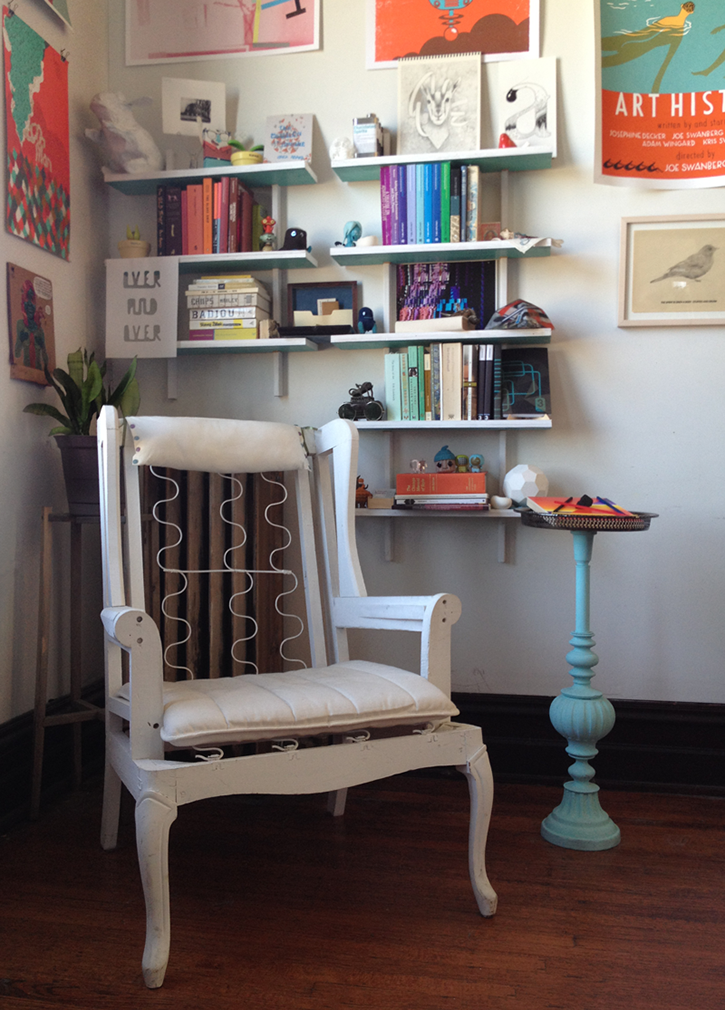
Giving and Receiving
SAIC helped Angeli Arndt (BFA 2010) find her own place in Chicago’s art community and become an active participant in its cultural ecosystem. Like any ecosystem, giving is a necessary part of participation, and receiving is a natural consequence.
"Volunteering isn’t something I can compartmentalize. I work in exchange for money, good will, goods, opportunities, prestige, etc. I absolutely always get something out of it. I have met amazing people and have participated in fantastic projects,” says Arndt.
Arndt’s commitment to giving stems from a promise she made to Fred Novy, the donor who funded a scholarship she received for her SAIC education. Before she came to the school, she was working at a company with Novy. "We discussed art and politics over coffee each morning for four years. He finally told me I should go back to school. At first I laughed it off…. But I decided to see what would happen, and that started a string of events that flipped my life on its head and brought me here,” she says.
She promised Novy that she would give back to the community, and today she supports a number of organizations that benefit the art community and address social issues by donating her time, attending events, or buying art or services. She volunteers at threewalls gallery. She and her husband Edwin Galloway run Angeli & Edwin, a freelance design operation that uses all of its proceeds to buy artwork and services from local artists and arts organizations. The couple also attends Sunday Soup, a microgranting event where guests pay $15 for a meal and then vote on a proposal to receive the event’s proceeds (around $500). Often the prize goes to a proposal that deals with a social problem. "The art world is highly connected to social issues,” says Arndt.
Her journey to active participation in the community began at SAIC. She describes herself as introverted and says "I came here to do art by myself in a closet, and no one would let me do that.”

The school’s faculty were instrumental in helping her learn how to make her own rules and find a starting place in the community. For one of her assignments in Michael Ryan’s (Arts Administration and Policy and Contemporary Practices) class, she was supposed to create a plan that could be implemented. But Arndt wrote a manifesto instead. It was an idea for a nonprofit that would solve the world’s problems. When asked which problems she intended to solve, she laughs, "All of them. There were lots of things in my head about how designers could solve the world’s problems. I was watching a lot of TED videos at the time.”
Ryan introduced her to Adelheid Mers (Arts Administration and Policy) who invited Arndt and Galloway to her home. She read the manifesto and suggested the couple find out what other people are already doing and get involved with that rather than trying to build something from the ground up. She sent them to Sunday Soup.
"Under the instruction of Michael Ryan, Adelheid Mers, and Shannon Stratton, I came to see SAIC as a community of cultural producers and thinkers instead of a place for me to learn to make ‘an Art,’” says Arndt.
She pursued a relationship with Stratton (Art History, Theory, and Criticism) Founder and Executive and Creative Director of threewalls gallery whose class at SAIC had made an impact on her. Arndt began by volunteering at the gallery’s annual fundraiser and soon became a volunteer graphic designer along with Galloway. They created a small library of print materials for the gallery, including pamphlets for its solo exhibitions and PHONEBOOK 3, a national directory of independent art spaces, programming, and projects and collection of critical essays.
"SAIC is an incubator for people, ideas, and collaborations. Some of the most memorable connections I made in my time as a student were with faculty and staff that I continue to work with today,” says Arndt.
